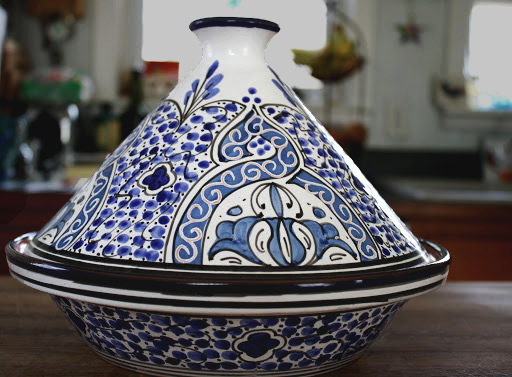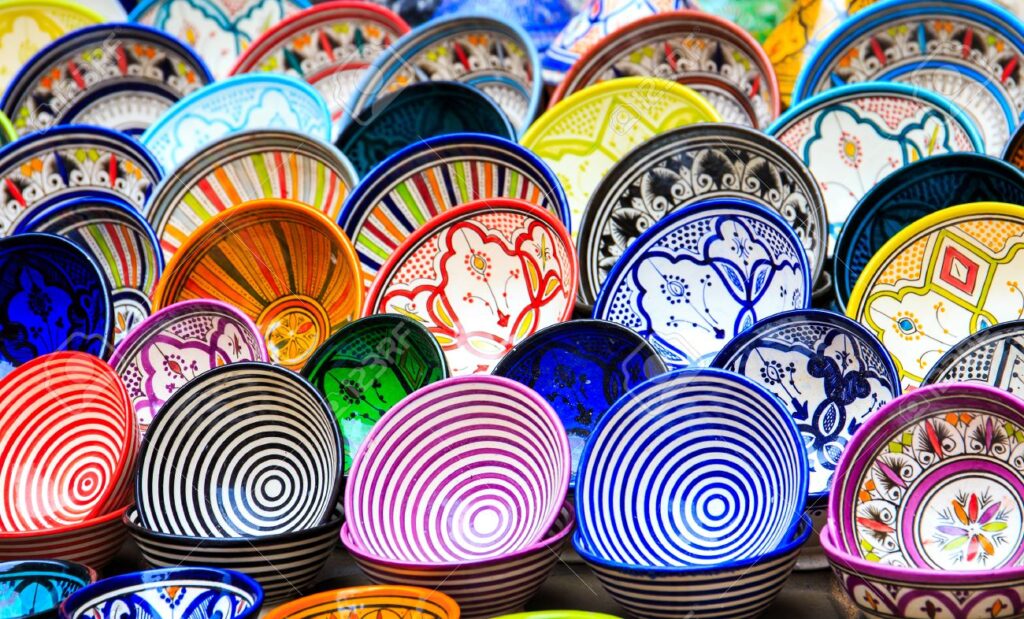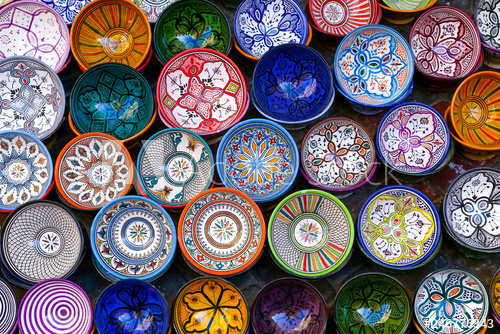Morocco’s souks are filled with colorful treasures, among them, a wide variety of pottery. Vases and pots, decorated with colorful etchings, sit for sale alongside tagines, the conical-shaped cooking pots typical of Moroccan cuisine. Three cities—Fez, Meknes and, especially, Safi, are the main pottery centers of the country, producing about 80 percent of Morocco’s pottery. In these cities, sun-baked clay twirls on wheels, forming into practical and attractive shapes. Designs etched into the wet clay set as the pottery dries in the sun. Artisans fire pieces in kilns and decorate them with colorful glazes, making them water-resistant.

Most Moroccan pottery design is heavily influenced by Islamic or Berber art. Intricate geometric and arabesque patterns tend to cover the entire surface of pieces, completely transforming the humble clay building materials. Groups of artisans carry on centuries-old traditions in their designs, passed on through families. Many pieces of pottery from Fez are various shades of blue, due to the use of cobalt oxide in glazes. Pottery from Safi is known for its metal inlays and is often made of red clay and glazed in green, turquoise and black. Potters throughout the country tend to use multicolor designs, whether Moorish-influenced curlicues or floral motifs.

Traditional ceramic pottery in Essaouira, Morocco
Pottery finds its way into markets all over the country, but enthusiasts will find extra interest in the town of Safi, considered the capital of Moroccan pottery. The National Ceramic Museum, located in an old Portuguese fort, shows off the typical pottery styles throughout the country, and, from the walls of the fort, you can see the potters’ hill, with artists at work at their kilns. Master potter Moulay Ahmed Serghini also has an atelier in Safi, where visitors, including children, can take ceramics workshops. Serghini’s work, which has been displayed at the British Museum, is also for sale throughout the city.
Like in any other culture, ceramic arts grew out of the practical need for housewares. In addition to their beauty, earthen dinnerware, serving pieces and cookware are useful purchases. Remember, however, that many glazes are safe for decorative purposes but can cause toxicity issues if the pottery is used for cooking—harmful materials like lead and cadmium are very common. Unless buying from a vendor specializing in household wares, buy pottery with an eye for décor, not for use with food. (Vases, of course, can be used functionally in a safe manner.)


I love this article about Moroccan pottery. The colors and designs are gorgeous! I have a travel website, http://www.lovelustorbust.com, and I think my readers would absolutely love to come to Morocco and see this beautiful pottery.